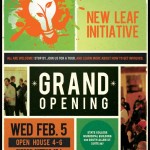Engineers Do Make a Difference!
by Casey A. Moore, P.E. (CE ‘89)
 Calling all Penn State engineering students, faculty, staff and alums: Let’s celebrate our profession, our accomplishments, and our contributions to society! Engineers in all fields of study play a significant role in our world and truly make a difference in people’s lives. We make the impossible, probable through innovation, creativity and problem solving.
Calling all Penn State engineering students, faculty, staff and alums: Let’s celebrate our profession, our accomplishments, and our contributions to society! Engineers in all fields of study play a significant role in our world and truly make a difference in people’s lives. We make the impossible, probable through innovation, creativity and problem solving.
National Engineers Week in the United States was founded by the National Society of Professional Engineers in 1951 and is celebrated annually the third full week of February – this year from February 16 – 22, 2014. The week, dedicated to all types of engineers, encompasses George Washington’s birthday, because he is often considered the nation’s first engineer and known for his work as a surveyor.
When Engineers Week, sometimes called Eweek, was formulated, its mission was to increase the understanding of, and interest in, engineering and technology careers and how they shape the world; helping students and adults alike discover engineering is its core theme. This week is a time for all engineers to call attention to, and demonstrate, the positive impact we have on the daily lives of most people. As engineers, specifically Penn State engineers, this is an excellent opportunity to act upon and communicate our passion for the profession. Sharing knowledge, experiences, and enthusiasm about engineering during this time helps us increase public awareness and brings technical vocations to life for students, educators and parents.
Eweek is a chance for engineers to participate in events aimed at informing educators, media and community leaders about our great profession and showing our commitment to service beyond self.
A coalition of engineering, education, and cultural societies, along with corporations and government agencies across the U.S. are at the core of making this Eweek a success. Some groups’ celebrations and activities during Eweek promote the importance of a technical education and a high level of math, science and technology literacy. Engineers volunteer their time to complete diverse, hands-on activities with students of all ages in order to motivate people to discover and pursue engineering or technology careers. Awards and recognition are frequently given at ceremonies and gala events, which helps to raise public awareness of the positive contributions that engineers make to our quality of life. The possibilities are endless in how the week is celebrated to show engineering pride!
The Penn State College of Engineering, and all its affiliated faculty, student groups and alums, could have widespread impact as leaders in creating, volunteering in, and promoting Eweek activities on and off university campuses, throughout the country and the world. On our campuses, a series of events could span the entire week to provide engineering students the opportunity to interact with other engineering students, faculty, and company representatives in both a professional and social manner, to educate the public about engineering, and to provide service to the community. With more than 10,000 undergrad and graduate students in its engineering programs, a faculty & staff of over 300 people supporting and educating students in engineering, and more than 90,000 alumni living and working around the world, Penn State can – and should – continue to make a difference. After all, our College of Engineering programs rank 19th (undergraduate) and 25th (graduate) out of all accredited universities nationally (U.S. News & World Report, October 13, 2013). With all of the diverse and excellent representation that Penn State has in the profession of engineering or technical trades, we should not only make Eweek special, but also make a year round commitment to making a difference. Let’s commit ourselves, and those engineers around us, to making it happen.
The following website can be used as one resource for getting anyone started, or to see what may be going on during Eweek near you – or to see how you can contribute to our profession, visit the DiscoverE website.
Casey Moore is a Vice President and Principal of McMahon Associates, Inc. with executive management responsibilities for the firm. He is one of six of the firm’s Board of Directors and a registered professional engineer in five states. As regional manager, he is in charge of nearly $10 million in annual revenues and 70 people in the firm’s seven Mid-Atlantic regional offices, and also serves as a Senior Project Manager of the firm for client project work. He is a 1989 graduate of Penn State’s civil engineering program with a transportation and construction management focus.
Mr. Moore is past president of the Mid-Colonial District of the Institute of Transportation Engineers. His professional service has been recognized with numerous awards including the 2010 Peter P. Quinn Leadership Award from GVF Transportation Management Association and the 2002 Young Engineer of the Year Award for the State of Pennsylvania from the PA Society of Professional Engineers.
Read More







Follow Us!